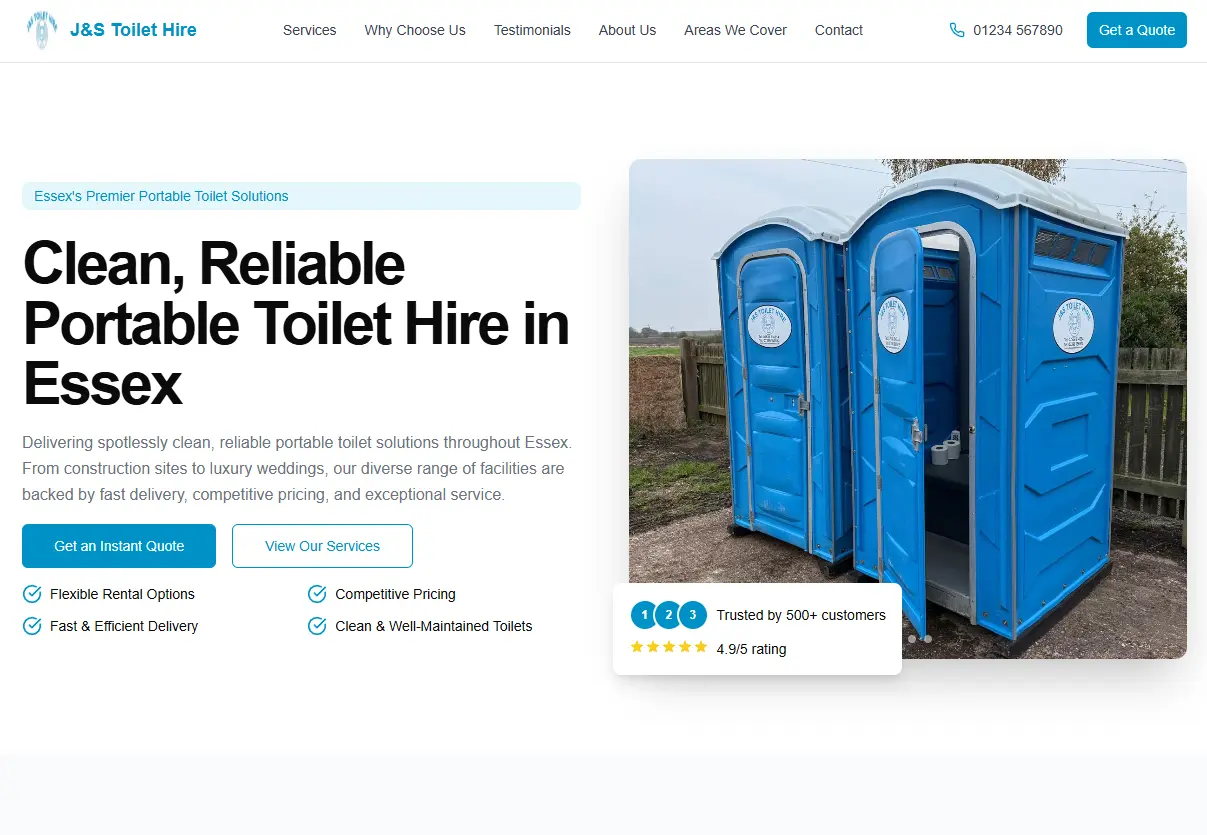In today’s competitive digital landscape, local business owners and marketers recognise that website speed is a crucial factor for success. Improving local website speed not only enhances user experience but also directly impacts local SEO performance, helping businesses rank higher on Google and attract more local traffic. This article explores actionable recommendations from SEO agencies on optimising local website speed effectively in 2025.
Why Is Website Speed Critical for Local SEO Success?
Website speed is a cornerstone of effective local SEO because it influences multiple aspects of search ranking and user engagement. Search engines, especially Google, prioritise sites that load quickly to provide the best possible user experience (UX). Slow websites contribute to higher bounce rates, as visitors often abandon pages that take too long to load, which negatively affects conversion rates.
Google’s focus on Core Web Vitals—which include Largest Contentful Paint (LCP), First Input Delay (FID), and Cumulative Layout Shift (CLS)—reflects the importance of page experience as part of its ranking criteria. These metrics measure loading speed, interactivity, and visual stability, all of which are essential for engaging local users effectively.
For local businesses, fast page speed translates to retaining visitors who may be looking for services or products nearby. It also facilitates quicker navigation through important pages such as contact forms, booking systems, and https://wickford-essex-vl873.tearosediner.net/what-results-can-i-expect-from-a-local-seo-marketing-company product listings, ultimately boosting conversions and revenue.
How Do SEO Agencies Perform Website Speed Audits for Local Businesses?
To recommend precise improvements, SEO agencies begin with comprehensive SEO audits focusing on website performance. They employ authoritative SEO tools like Google PageSpeed Insights, GTmetrix, and Pingdom. These tools provide detailed analyses of loading times, Core Web Vitals scores, and possible bottlenecks affecting speed.
An effective site audit evaluates:

- Server **response time (TTFB)** – critical for initial page load speed, especially for local audiences. Technical SEO aspects such as render-blocking JavaScript or unoptimised CSS. On-page SEO factors influencing speed including image sizes, resource compression, and caching implementation. Mobile optimisation effectiveness, recognising the dominance of mobile-first indexing.
The resulting report highlights specific issues affecting the page speed and provides actionable steps tailored for local businesses, considering their audience and infrastructure.
What Are the Top Image Optimisation Techniques Recommended by SEO Experts for Faster Local Websites?
Images can significantly slow down websites if they’re not handled properly. SEO experts suggest the following proven techniques for image optimisation:
- Image Compression: Tools like TinyPNG or ImageOptim reduce file size without noticeable quality loss. Lazy Loading: Images load only as they enter the viewport, reducing initial data transfer and speeding up page render. Using Next-Gen Formats: WebP images offer better compression rates than traditional JPG or PNG files, improving load times. Proper Sizing: Ensuring images are scaled appropriately to different screen sizes, avoiding unnecessary large file downloads.
These measures optimise resource delivery and ensure faster content display, enhancing both desktop and mobile user experiences.
How Does Caching and CDN Usage Improve Local Website Speed?
Caching and Content Delivery Networks (CDNs) are essential components in modern web performance strategies. SEO agencies recommend:
- Browser Caching: Stores static resources like images, CSS, and JavaScript locally on users’ devices, reducing repeat load times. CDN Integration: CDNs distribute website content across global edge servers, enabling faster data delivery from servers nearer to local visitors. Reducing Server Response Time (TTFB): A fast server response is critical for page speed; optimising backend processes and choosing good hosting reduces latency. Server-Side Caching: Caches dynamically generated content to reduce server load and improve delivery speed on subsequent visits.
Together, these strategies reduce delays and improve overall speed metrics critical for local SEO rankings.
What Role Does Mobile Optimisation Play in Local Website Speed?
With Google prioritising mobile-first indexing, optimising websites for mobile devices is indispensable for local SEO success. SEO experts advise:
- Minimising JavaScript and CSS: Reducing code complexity accelerates rendering on mobile browsers. Implementing AMP: **Accelerated Mobile Pages (AMP)** serve lightweight versions of pages, dramatically cutting load times and improving user experience. Mobile Speed Testing: Regular use of **Google Mobile-Friendly Test** and **PageSpeed Insights** helps identify mobile-specific speed bottlenecks.
Fast mobile load times increase engagement and reduce bounce rates, making mobile optimisation a priority for local businesses.
Which Coding and Resource Optimisation Strategies Do SEO Agencies Suggest?
Efficient coding practices and resource management drastically improve website speed. SEO agencies recommend:
- Minifying Code: Eliminating unnecessary characters from CSS, JavaScript, and HTML reduces file sizes. Code Splitting: Breaking scripts into smaller chunks prioritises loading critical content first, speeding up perceived load times. Removing Render-Blocking Resources: Deferring non-critical JavaScript and CSS prevents delays in page rendering. Enabling Compression: Using Gzip or Brotli compression decreases the amount of data transferred from server to client. Upgrading Protocols: Employing HTTP/2 or HTTP/3 allows multiplexed requests, improving loading efficiency, especially for resource-heavy pages.
These technical adjustments ensure rapid and smooth page rendering, enhancing user satisfaction and SEO outcomes.
How Important Is Technical SEO and Plugin Optimisation for Local Website Speed?
Technical SEO encompasses many elements integral to site performance. Specific recommendations include:
- Disabling or removing unnecessary plugins to avoid script bloat and reduce page weight. Optimising CMS or WordPress themes for clean, lightweight code to accelerate rendering. Cleaning and optimising databases regularly to speed up queries and server responses. Selecting hosting providers focused on speed and localisation to decrease latency for targeted audiences. Implementing server-side rendering where suitable to accelerate first meaningful paint.
Efficient plugin and theme management combined with robust hosting enhances both speed and reliability for local SEO benefits.
What Additional Website Maintenance Tasks Improve Speed for Local Businesses?
Maintaining optimal website speed requires ongoing attention. Recommended practices include:
- Regularly updating CMS platforms, themes, and plugins to leverage performance improvements and security patches. Continuous monitoring of site speed with periodic **performance testing** using tools like GTmetrix or Pingdom. Scaling hosting resources as local traffic increases to prevent server overload and slowdowns. Removing obsolete media files and outdated content to keep the website lean and responsive.
Proactive maintenance safeguards website speed and preserves favourable search rankings over time.
How Do Core Web Vitals Affect Local SEO and What Benchmarks Should Local Businesses Aim For?
Core Web Vitals measure critical aspects of page experience, influencing both SEO and user satisfaction. Local businesses should target:

- LCP: Below 2.5 seconds for main content to load. FID: Less than 100 milliseconds delay for first interaction. CLS: Maintain a score below 0.1 to prevent disruptive layout shifts.
Meeting these benchmarks aligns with Google’s ranking factors, driving improved local visibility and user retention.
Can Accelerated Mobile Pages (AMP) Improve Speed and Ranking for Local Businesses?
AMP pages deliver stripped-down, lightning-fast mobile experiences. They enhance user experience by minimising load times, which benefits SEO rankings on mobile searches. However, AMP may not suit every local business: it’s best for content-rich or news-oriented sites. For service or product-centric local businesses, optimised responsive designs may suffice.
What Are Common Pitfalls Local Businesses Encounter in Site Speed Optimisation?
Common mistakes include:
- Overloading websites with plugins that increase HTTP requests and script execution time. Choosing poor-quality or distant hosting servers leading to increased TTFB and latency. Using large, uncompressed images that significantly slow page loads. Failing to remove render-blocking JavaScript and CSS causing delayed page rendering.
Avoiding these pitfalls ensures smoother and faster local website performance.
Frequently Asked Questions (FAQ)
1. What is a good website loading speed for local SEO?
Aim for under 3 seconds on both desktop and mobile, with LCP ideally below 2.5 seconds for optimal rankings and user experience.
2. How often should local businesses test their website speed?
At least monthly or immediately after significant website updates to swiftly address emerging issues.
3. Does hosting location influence local website speed?
Yes, hosting servers geographically close to your target audience reduce latency and improve TTFB, enhancing local site speed.
4. Can too many plugins really slow down my local website?
Absolutely. Excessive or poorly coded plugins can introduce additional scripts and styles, increasing load times and harming performance.
5. Is AMP necessary for all local businesses?
Not necessarily. While AMP improves mobile load speed for content-heavy sites, other businesses might benefit more from tailored mobile optimisations without AMP.
Conclusion
Local website speed is a decisive factor for SEO success in 2025. SEO agencies consistently highlight image optimisation, caching, CDN usage, mobile-first design, efficient coding, technical SEO, and ongoing maintenance as key strategies for improving site speed. By prioritising these enhancements, local businesses can significantly elevate their user experience, reduce bounce rates, and achieve stronger search rankings on Google, driving more traffic and increasing conversions. Start with a thorough website speed audit and implement these expert recommendations to stay ahead in the competitive local SEO landscape.